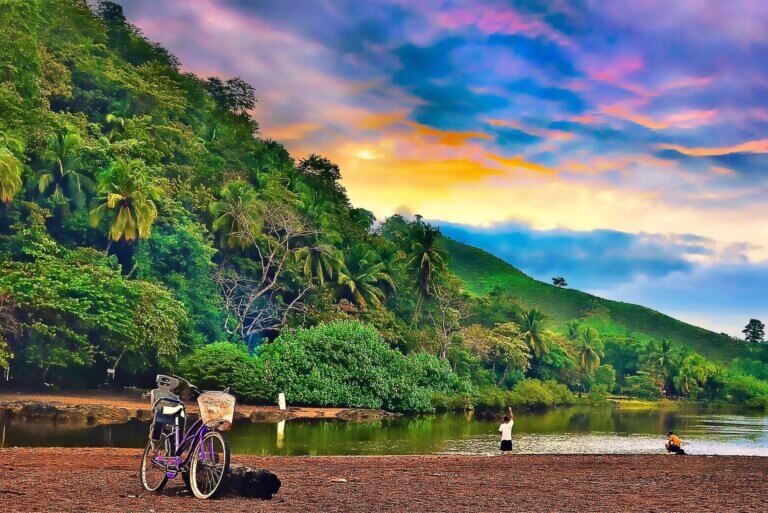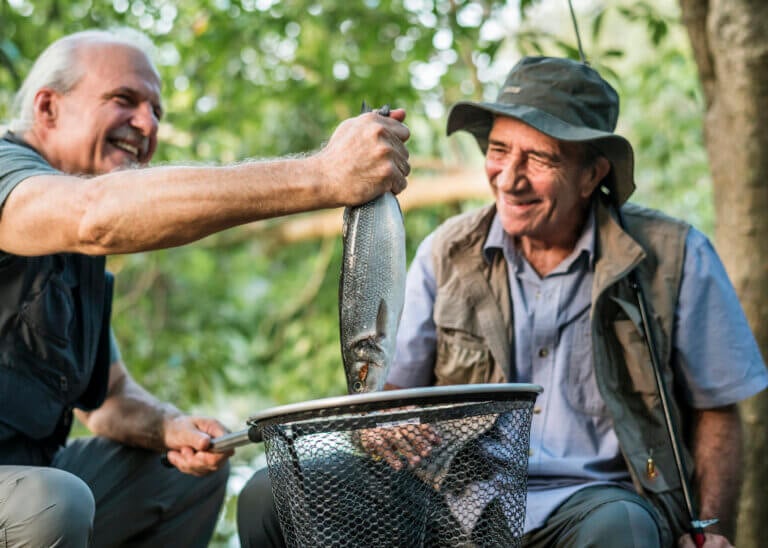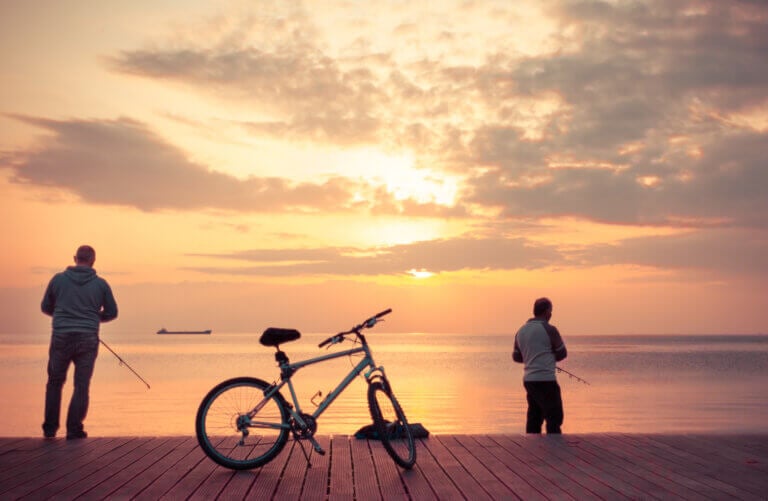How to start enjoying the great outdoors in a completely new way

Bicycle fishing (also known as “bike fishing”) is exactly what it sounds like. Grab your bicycle, maybe some camping gear, your rod, and then hit the trails.
Fishermen and cyclists alike enjoy the great outdoors. So why not mix the two together, right? A blend of camping, fishing, and cycling, bike fishing is one of America’s favorite pastimes, but it’s a niche hobby, to say the least.
What is bicycle fishing?
If you’re using your bike or e-bike to hit trails and find hidden fishing spots, you’re bike fishing. Whether fishing for the thrill or for sustenance, bike fishing is a tight-knit community of people who’ve successfully meshed a few great sports into one.
Because the right fish to eat or hunt can be hard to find, and easy to scare off, bike fishers take to the trails for a greater chance at success. By cycling to more remote fishing locations, there’s a higher chance of hooking a great fish. Depending on how far bike fishers venture for a better fishing spot, many opt to camp overnight and cook the day’s fresh catch.
What kind of bike do I need for bike fishing?
The best ride for a bike fishing trip depends on the terrain. If you’re riding dirt paths through mountains in California to fish in secluded springs, you might be better off with a rig that has fatter tires. However, if you’re planning a quick day trip, you can probably get away with your road bike set up.
You’ll also need to consider how long your bike fishing trip is. For a day trip, you likely won’t need both front and rear racks (maybe just a frame bag will do). However, for a weekend or several-day stay, you’re going to have a lot of gear to pack. This means front and rear racks at the very least, or a comfortable backpack you’re used to lugging. You’ll also need:
- Apparel and footwear that can get wet, and dry quickly
- A lightweight fishing rod
- A backpack, front and rear racks, or a set of frame bags
- Emergency supplies (e.g. first aid kit, bike repair kit, etc.)
- Cooking gear if you plan to eat your catch that day (which could just be tin foil)
- Any typical camping gear you’d need for an overnight stay
Bike fishing can be light if you think ahead and pack accordingly. Plenty of fishing, camping, and cycling retail shops carry lightweight gear that is ready for the outdoors and getting wet. You might just need to shop around a little bit to find a set-up that works best for you.

Can I DIY a bike fishing pole holder?
If you’re just getting into bike fishing or are in the DIY mood, there are plenty of ways to make your own bike-mounted fishing pole holder. Plus, it’s a great way to save some space on your rig set up and make riding the trails a little easier — even if you’re using a fly rod.
Plenty of bike fishing enthusiasts make their own bike-mounted rod holders. Usually, it just takes some PVC pipe, some rubber end caps, a flat plate, and some kind of seat-post rack. This method lets cyclists store their rods beneath their bike seats. Depending on the type of rod you have (one-piece vs. two-piece vs. three-piece), you may have to adjust your DIY bike fishing pole holder design. Alternatively, you can find these set-ups pretty cheap on Amazon through other outdoor shops.
Is bike fishing dangerous?
Just like anything else, bike fishing can be dangerous if you aren’t careful. Your environment, emergency preparedness, and experience are all factors that go into how safe you’ll be. Here’s a list of things to consider and prepare for before your first bike fishing voyage.
Plan your bike fishing route and know your environment
Know where you’re going and have an exit strategy. Whether you’re riding through mountains, alongside popular fishing streams, or heading to a favorite childhood spot, it’s best to know where you’re going. GPS isn’t always reliable and maps can get wet if they aren’t sealed properly. Plan your route accordingly so you can get there safely, and more importantly, get back safely.
If you’re planning on taking your electric bike, be sure to research water levels beforehand. Floods or marshes can be tough on e-bikes, and carrying them through wet terrain can be even tougher.
For bike fishers who plan to ride then ditch the gear and walk to the fishing spot, ensure everything is brightly colored so you can find it easily on your walk back in.
Lastly, be familiar with the wildlife and plantlike that are likely to be found along your route. Things like bear sightings, poison oak or poison ivy, and bugs can make a bike fishing trip less than pleasant.
Bring a friend
For bike fishers venturing out for the first time or heading to a new location, adopt the classic buddy system. Partnering up with a friend or family member can not only make bike fishing safer, but it can also make it more enjoyable with quality company.

Bring emergency supplies
Remember to prepare for cycling emergencies, medical emergencies, and fishing emergencies alike. This means bringing an emergency bike repair kit AND a first aid kit. A flat tire or a hook in the wrong spot can spell disaster. Packing lightweight emergency kits come in handy and it’s worth the investment.
Ensure your kits and gear are visible
To avoid scaring off the nearby fish, many bike fishing enthusiasts stash their rides and gear somewhere along the stream and walk to the water’s edge. This practice also helps keep bike fishing gear safe and dry. Unfortunately, if your gear is unmarked and camouflaged, it can be hard to find on your way back in.
To avoid having to hunt through the wilderness for your own stuff, clearly mark it and/or attach a GPS tag to your frame. It’s recommended you use bright orange or another neon color that stands out. Remember, if you choose to only tag your frame with GPS, the signal isn’t always reliable and GPS tracker batteries can die. Bring battery backups or simply tie a bright orange flag around your bicycle’s handlebars.
Don’t go too far outside your bike fishing comfort zone
It’s always fun to try new things. It’s also important to stay safe. Accidents happen while camping, fishing, and cycling all the time. Gear breaks, flat tires happen, and it’s always best to be prepared.
Many bike fishers purchase bicycle insurance policies for these very reasons. Not only do they have greater peace of mind while enjoying the outdoors, they also get coverage for:
- The full value of their bicycle
- Crash damage
- Electric bicycles
- Spare parts, riding apparel, and cycling accessories
- Bicycle theft
- And more
For more information about how to protect your bike fishing ride, and yourself, read about the ins and outs of bicycle insurance. Simple Bike Insurance offers policies starting at just $100 a year and you can get started now with an instant quote. Now get out there, stay safe, and fish your heart out!
